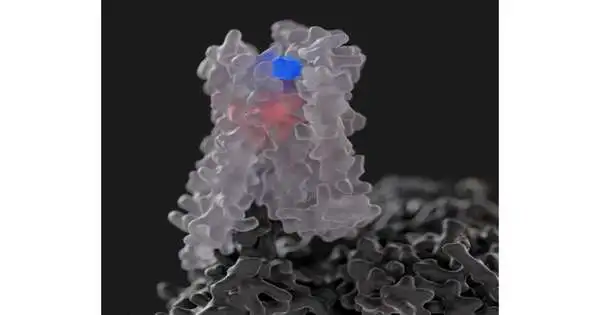“Allosteric modulators,” a class of drugs that work at the M4 muscarinic receptor, a major target for notoriously difficult-to-treat psychiatric disorders associated with cognitive deficits, such as schizophrenia, have been the subject of a groundbreaking international study led by Monash University.
The largest drug target class that is encoded by the human genome is the superfamily of G protein-coupled receptors (GPCRs), which includes muscarinic receptors. Particularly, the M4 muscarinic receptor subtype regulates neurotransmitters like dopamine and glutamate in key areas of the brain involved in psychosis and cognition. However, conventional agonists and antagonists were notoriously difficult to selectively target until recently.
With the discovery of highly selective allosteric modulators for this receptor in recent years, this problem has begun to be solved. However, despite the significant clinical implications, there is still a significant knowledge gap regarding how such drugs achieve their selectivity and regulate M4 receptor activity in response to various activators.
“By determining the cryo-EM structures of the M4 muscarinic receptor and using molecular dynamics simulations, the team has provided a holistic framework for future GPCR mechanistic studies and, as a result, opened up new approaches for GPCR drug discovery,”
MIPS Senior Research Fellow, Dr. David Thal,
This important gap in our molecular understanding of how allosteric modulators mediate their effects at the M4 muscarinic receptor has now been addressed by the new study, which was published in eLife and was led by a group of researchers from the Monash Institute of Pharmaceutical Sciences (MIPS).
The pharmacological properties of two distinct “positive” allosteric modulators, either alone or in combination with two different agonists, at the human M4 muscarinic receptor were rigorously quantified in this study by the MIPS researchers, who are world leaders in the discovery and development of next-generation neuromedicines, including allosteric modulators, for difficult-to-treat mental illnesses.
In addition, the team made use of recent advancements in molecular dynamics simulations and cryo-electron microscopy (cryo-EM) to uncover novel evidence of key molecular mechanisms underlying allosteric pharmacology. This helped us gain a better understanding of the structural basis for allosteric modulation of the M4 muscarinic receptor and paved the way for the creation of new allosteric drugs.
The researchers found, in particular, that conformational dynamics between the sites of the ligand-receptor-G protein complex play a crucial role in the final determination of affinity, efficacy, the degree of allosteric modulation, and the mechanisms underlying the species variability of allosteric drugs. These findings have significant implications for the translation of such agents from preclinical to clinical trials.
Dr. David Thal, the author and MIPS Senior Research Fellow, stated that an important paradigm in drug discovery is allosteric modulation of GPCRs. However, despite decades of research, the general principles governing the numerous pharmacological effects of GPCR allosteric modulators remain elusive at the molecular level.
Dr. Thal stated, “The team has provided a holistic framework for further GPCR mechanistic studies and, in turn, opened up new approaches for GPCR drug discovery” by determining the M4 muscarinic receptor’s cryo-EM structures and applying molecular dynamics simulations.
According to Professor Arthur Christopoulos, FAA, FAHMS, who is also a co-author of the study, Dean of the Faculty of Pharmacy and Pharmaceutical Sciences, and Director of Monash’s Neuromedicines Discovery Centre, the findings have wider repercussions for the creation of brand-new allosteric medications that are intended to lessen the symptoms of schizophrenia and cognitive disorders that are currently untreated.
“The severity of impaired cognition, which is a major predictor of prognosis and cannot be treated with any antipsychotic medication, characterizes the vast majority of schizophrenia patients. “However, the development of new treatments that are both safe and effective has stagnated for decades,” Professor Christopoulos stated.
“This study’s research is a crucial step toward developing the next generation of medical therapies and innovations that have the potential to truly improve health and save lives.”
The findings present exciting new opportunities, according to Dr. Celine Valant, who is also a corresponding author and senior research fellow at MIPS.
“The proof introduced in this study will empower future GPCR drug revelation research and possibly lead to the improvement of cutting-edge prescriptions for the treatment of a scope of mental and behavioral issues,” said Dr. Valant.
More information: Ziva Vuckovic et al, Pharmacological hallmarks of allostery at the M4 muscarinic receptor elucidated through structure and dynamics, eLife (2023). DOI: 10.7554/eLife.83477





